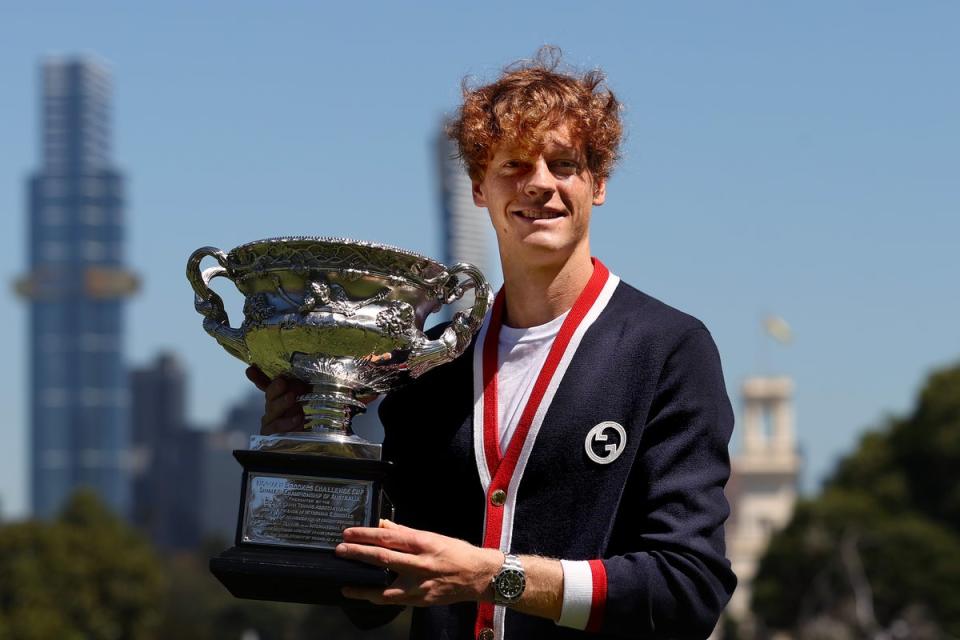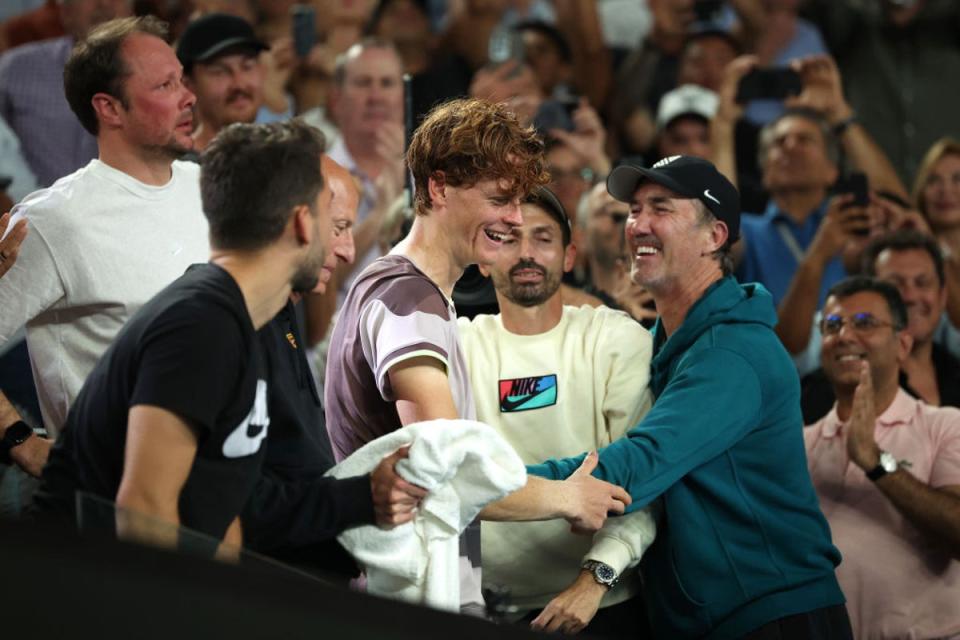Jannik Sinner and the patient path to becoming a grand slam champion
When a teenage Jannik Sinner arrived at his first grand slam, it was not the sight of his wiry frame or curly red hair that captured the attention of those walking between the practice courts, but a sound. As the Italian made his way onto the professional circuit, it was the noise of his immaculate ball-striking and the pop of his crisp forehand that rang around the grounds and made the best players and coaches in the sport stop in their tracks. Sinner’s coach, Darren Cahill, remembers where he was when he heard it for the first time. “The sound of the ball when he hits it is unique and special,” he said. Cahill believed it was the sound of a future grand slam champion.
On Sunday, at the age of 22, Sinner took the final step on that journey, as the Italian’s thumping forehand helped him to complete an extraordinary comeback against Daniil Medvedev to win the Australian Open. From two sets down in his first grand slam final, Sinner stuck to the calm and considered approach that has fueled a rapid ascent to the top of his sport. Driven by a commitment to making incremental improvements to all aspects of his game, Sinner did not make drastic alterations as he trailed Medvedev and trusted that he would find some momentum as his opponent tired. “That’s all,” he said. “The process and the hard work will always pay off.”
Although it was ball-striking that first marked Sinner as a future grand slam champion, the Italian understood that alone was not going to be enough for him to fulfil his ultimate goals. After taking to the professional tour as a teenager, he was soon made to realise his weaknesses and where he could improve. Unlike his generational rival Carlos Alcaraz, whose astonishing rise was like a cork being shot out of a bottle, Sinner did not enjoy immediate success against those in the top-10 he would one day seek to surpass. He racked up losing records against the likes of Medvedev, Stefanos Tsitsipas and Alexander Zverev – the trio a generation ahead of Sinner who were initially tipped as future grand slam champions.

But Sinner remained committed to his process, absorbing the knowledge he had gained from tough losses at the grand slams and understanding what would make the difference. At the start of 2022, Sinner made the bold decision to completely overhaul his coaching team. Finally, he added to his all-Italian team the Australian Cahill, who had helped Andre Agassi, Lleyton Hewitt and, more recently, Simona Halep, to grand slam titles. Piece by piece, Sinner improved mentally and physically, adding variety to his groundstrokes and developing his confidence. By the second half of last season, Sinner was beating top-10 players, including Medvedev and Alcaraz, regularly and at the latter stages of tournaments in Vienna and Beijing.
A crucial moment came at Wimbledon, not as Sinner was defeated in straight sets by Novak Djokovic in the semi-finals, but as Alcaraz won his second grand slam title by beating the four-time defending champion in an epic five-set final. Djokovic had repeatedly denied the generation ahead of Sinner and Alcaraz but the 20-year-old Spaniard broke the spell of his dominance. As he sat with the Wimbledon trophy, Alcaraz glowed: “It’s great for the new generation as well, I think, to see me beating him and making them think that they are capable of doing it.” Asked if Alcaraz’s success in becoming a two-time grand slam champion before Sinner had managed to win one had driven him on even further, Cahill gave a simple reply: “Hell, yeah,” he said. “Absolutely.”

With a reworked serve adding to Sinner’s more rounded game, the Italian defeated Djokovic twice in two weeks towards the end of last season, in the group stages of the ATP Finals and then again as he led Italy to the Davis Cup. It signalled that Sinner was ready to compete for the biggest titles. Sinner, like Alcaraz in the Wimbledon final, was not overawed by facing the 24-time grand slam champion, particularly as he stared Djokovic down to save three match points in the Davis Cup semi-final. When it came to facing Djokovic in the Australian Open semi-finals, Sinner understood what was required. As he handed Djokovic his first defeat in Melbourne since 2018, Sinner barely flinched and was focused on the final.
Given how keen the sport of tennis has been to appoint a successor to the Djokovic, Rafael Nadal and Roger Federer era, perhaps Sinner and Alcaraz will always be compared to each other; they will be now more than ever as grand slam champions. Their paths to the top, though, have not shared much overlap. With Alcaraz, everything happened so quickly: beating Nadal and Djokovic in the space of a week in Madrid at the age of 18, a grand slam champion at 19, the youngest World No 1 of all time. After winning the Australian Open at 22, Sinner is still one of the youngest grand slam champions ever, but he required more time. That in itself wasn’t easy.

“Patience can be your biggest enemy,” Sinner said. “Because if you’re not that patient, you rush in one way, and then you forget maybe some steps what you should do to become a better player.” And now Sinner has arrived as a grand slam champion, Alcaraz has only reached one final and hasn’t won a tournament since Wimbledon; the Spaniard showing signs that he still needs to pull together parts of his game that until now, have been covered up by his transcendent, explosive talent. Sinner’s progress feels more natural. Nevertheless, he understands there is still room for more growth.
“That’s what Jannik has been attempting to do for the last couple of years,” Cahill said. “That’s a great quality and that’s what he needs to continue to do. Never stop evolving and never stop getting better.”

